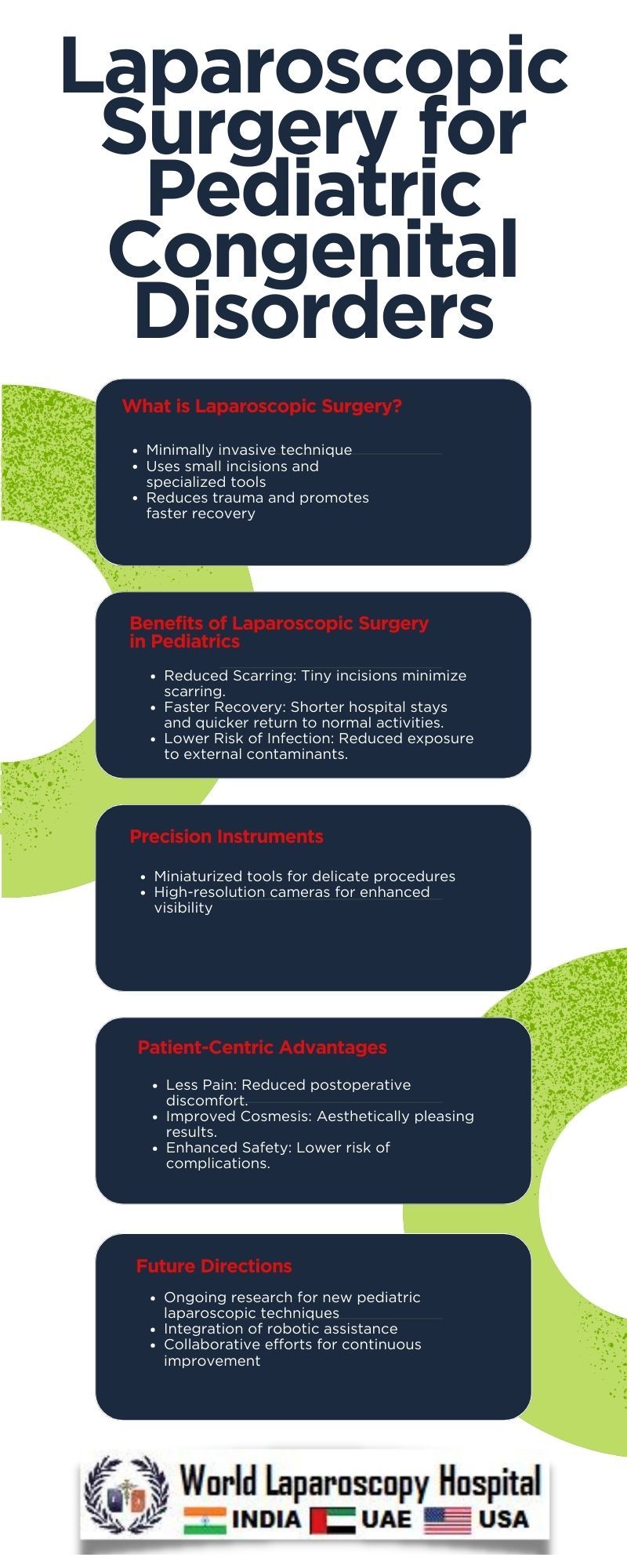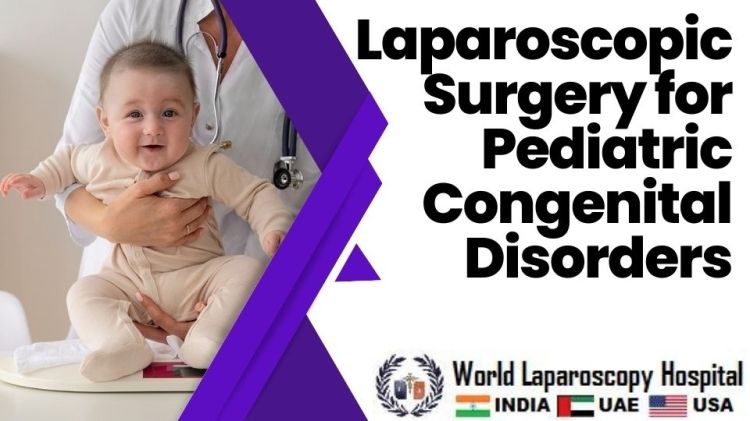Laparoscopic Surgery for Pediatric Congenital Disorders
Introduction:
Pediatric congenital disorders present unique challenges in medical intervention, requiring specialized approaches to ensure optimal outcomes. One such groundbreaking technique that has transformed the landscape of pediatric surgery is laparoscopic surgery. This minimally invasive procedure, also known as keyhole or band-aid surgery, has gained prominence for its effectiveness in treating various congenital disorders in children. In this comprehensive article, we delve into the intricacies of laparoscopic surgery, its applications in pediatric care, benefits, challenges, and the evolving landscape of this innovative approach.

Understanding Pediatric Congenital Disorders:
Pediatric congenital disorders encompass a wide range of conditions that manifest from birth due to anomalies in development. These disorders can affect various organ systems, including the gastrointestinal, urological, and respiratory systems. Traditional open surgeries have long been the standard for correcting these anomalies, but they often involve larger incisions, prolonged recovery times, and increased postoperative pain.
Enter Laparoscopic Surgery:
Laparoscopic surgery, first introduced in the 1980s, represents a paradigm shift in surgical techniques. The procedure involves making small incisions through which a laparoscope—a thin, flexible tube with a camera and light source—is inserted, allowing surgeons to visualize the surgical site in real-time on a monitor. Specialized instruments are then used through additional small incisions to perform the necessary interventions.
Applications in Pediatric Care:
Laparoscopic surgery has found wide applications in pediatric care, addressing an array of congenital disorders:
-
Gastrointestinal Disorders:
- Appendicitis: Laparoscopic appendectomy has become a standard approach in pediatric cases, offering reduced pain and faster recovery compared to traditional open surgery.
- Esophageal Atresia: Laparoscopy aids in repairing this congenital condition, allowing for precise anastomosis and minimizing trauma to surrounding tissues.
-
Urological Disorders:
- Hydronephrosis: Laparoscopic pyeloplasty is increasingly used to correct ureteropelvic junction obstruction, promoting quicker recovery and minimal scarring.
- Undescended Testes: Laparoscopic orchidopexy proves effective in repositioning undescended testes, ensuring improved cosmetic outcomes.
-
Respiratory Disorders:
- Congenital Diaphragmatic Hernia: Laparoscopic repair of diaphragmatic hernias provides a less invasive alternative, especially in selected cases, offering advantages in terms of postoperative pain and recovery.
Benefits of Laparoscopic Surgery in Pediatric Cases:
-
Minimized Trauma:
- The use of small incisions significantly reduces trauma to tissues, resulting in less pain and a quicker recovery period for pediatric patients.
-
Improved Cosmetic Outcomes:
- Smaller incisions contribute to better cosmetic results, particularly important in pediatric cases where body image and self-esteem are crucial aspects of development.
-
Reduced Pain and Discomfort:
- Laparoscopic procedures generally cause less postoperative pain than traditional open surgeries, enhancing the overall experience for pediatric patients and their families.
-
Shortened Hospital Stays:
- Quicker recovery times often translate to shorter hospital stays, allowing children to return to their normal activities sooner.
-
Enhanced Precision:
- The magnified view provided by the laparoscope allows for enhanced precision in surgical maneuvers, reducing the risk of complications and improving overall outcomes.
Challenges and Considerations:
While laparoscopic surgery offers numerous benefits, it is essential to acknowledge the challenges associated with this approach in pediatric cases:
-
Technical Expertise:
- Performing laparoscopic surgery requires specialized training and expertise. Pediatric surgeons must undergo rigorous training to master the nuances of these procedures.
-
Equipment Limitations:
- The size of pediatric patients can pose challenges in terms of equipment size and maneuverability. Surgeons need access to specialized instruments designed for pediatric laparoscopic procedures.
-
Case Selection:
- Not all pediatric cases are suitable for laparoscopic intervention. The selection of cases must consider factors such as patient size, anatomy, and the complexity of the congenital disorder.
-
Learning Curve:
- Implementing laparoscopic techniques in pediatric surgery involves a learning curve for surgical teams. Continuous training and mentorship are crucial for ensuring safe and effective procedures.
The Evolving Landscape:
As technology advances and surgical techniques evolve, the landscape of laparoscopic surgery in pediatric care continues to expand. Some notable developments include:
-
Robot-Assisted Laparoscopy:
- Robotic systems have been introduced to enhance the capabilities of laparoscopic surgery. These systems offer improved dexterity and precision, further advancing the feasibility of minimally invasive approaches in pediatric cases.
-
Innovations in Instrumentation:
- Ongoing research and development focus on creating specialized laparoscopic instruments tailored for pediatric use. These innovations aim to address the unique challenges posed by the size and anatomy of pediatric patients.
-
Collaborative Approaches:
- Multidisciplinary collaboration between pediatric surgeons, anesthesiologists, and other specialists ensures comprehensive preoperative assessment and postoperative care, optimizing the overall surgical experience for pediatric patients.
Conclusion:
Laparoscopic surgery has emerged as a transformative force in the field of pediatric surgery, offering a less invasive alternative for the correction of congenital disorders. The numerous benefits, including minimized trauma, reduced pain, and enhanced precision, make this approach particularly appealing in the context of pediatric care. As the field continues to evolve with technological advancements and refined techniques, laparoscopic surgery is poised to play an increasingly prominent role in ensuring optimal outcomes for children with congenital disorders. Continuous research, training, and collaboration will further propel the integration of laparoscopic techniques, ultimately shaping the future of pediatric surgical care.
